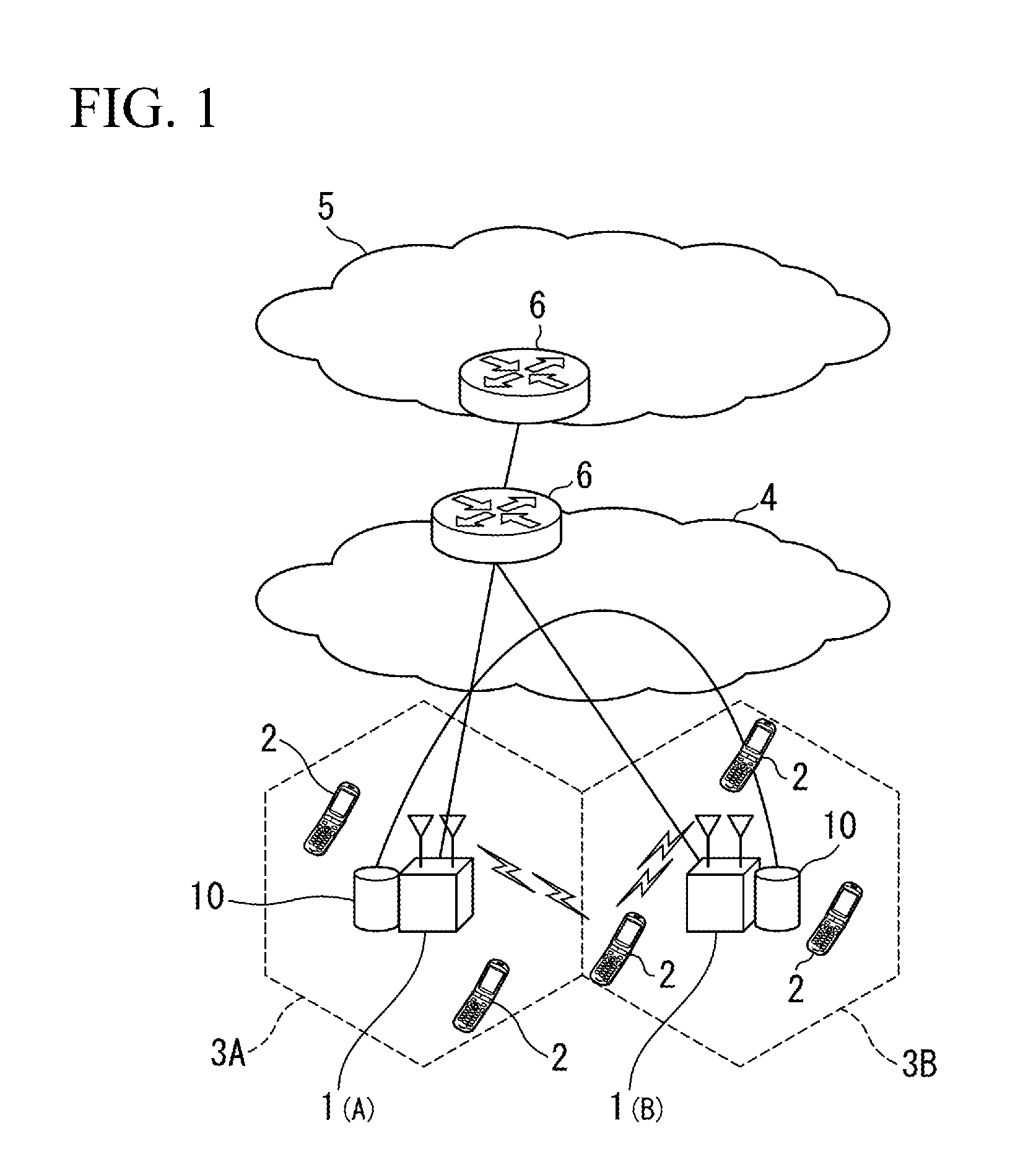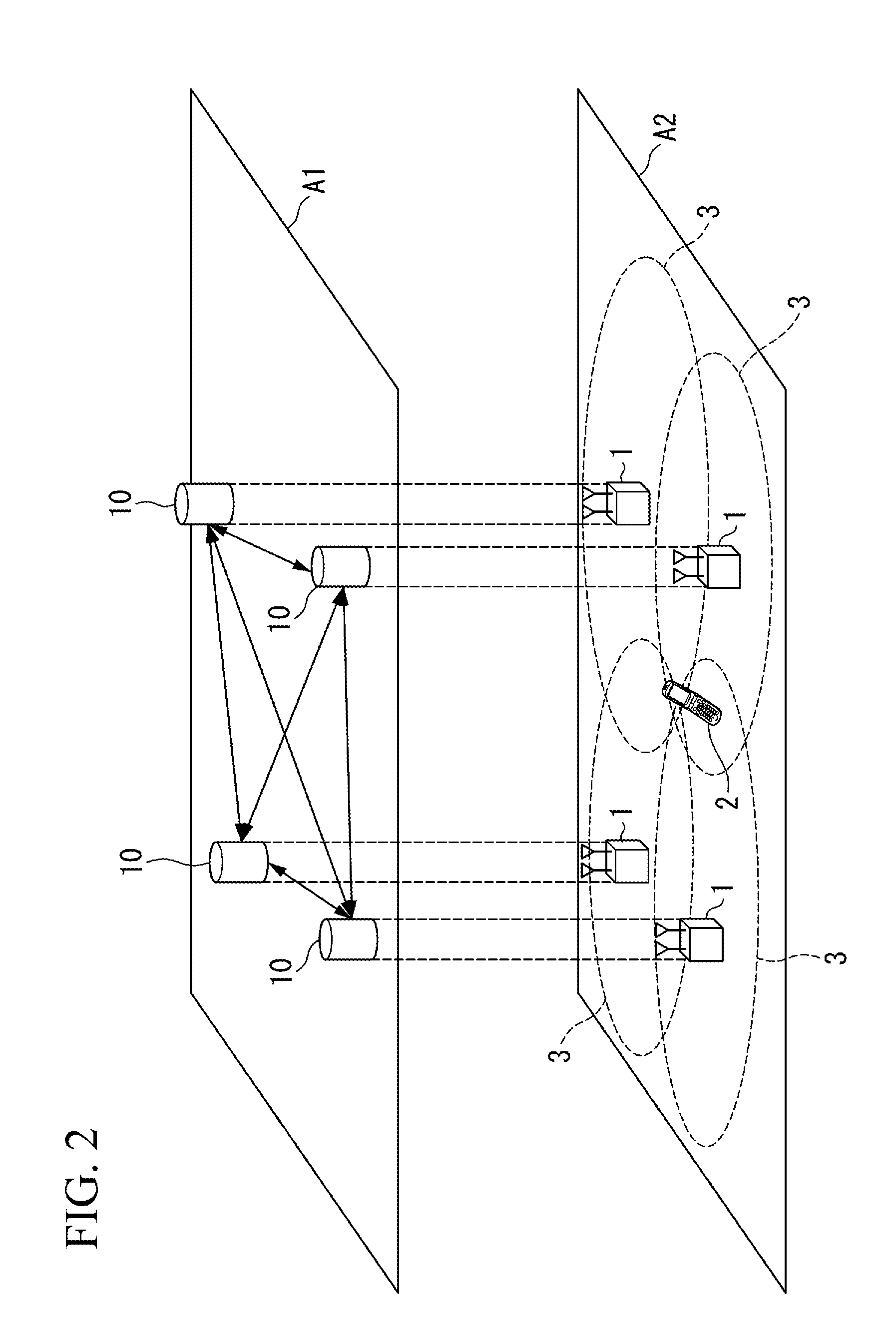Cellular mobile communication system, base station control device, and interstation-cooperated communication control method
- Summary
- Abstract
- Description
- Claims
- Application Information
AI Technical Summary
Benefits of technology
Problems solved by technology
Method used
Image
Examples
first embodiment
[0051]FIG. 1 is an overview diagram of a cellular mobile communication system according to a first embodiment of this invention. The cellular mobile communication system of FIG. 1 encompasses base stations 1 and mobile stations (or user terminals) 2. The base stations 1 provide their cells. The mobile stations 2 are wirelessly connected to the base stations 1 to perform communication. FIG. 1 exemplarily shows two base stations 1 (having base station identifiers A, B), a cell 3A provided by the base station 1(A), and a cell 3B provided by the base station 1(B). The base stations 1 (i.e. the base stations 1(A), 1(B)) include base station cooperating units 10. The base station cooperating units 10 have functions for controlling interstation-cooperated communication.
[0052]The base stations 1 are connected to a core network 5 via a backbone network 4. The backbone network 4 and the core network 5 have their own routers 6.
[0053]The base station cooperating units 10 of the base stations 1 ...
second embodiment
[0133]A second embodiment is related to a procedure of initiating interstation-cooperated communication with maximally three base stations. The second embodiment is adapted to the cellular mobile communication system which does not necessarily encompass three base stations but can encompass four or more base stations. The reason why the limited number of base stations conducting interstation-cooperated communication is to prevent control processing for interstation-cooperated communication from being extended in a broad range. The second embodiment limits the number of base stations conducting interstation-cooperated communication to three, but the procedure of the second embodiment can be applied to interstation-cooperated communication conducted with maximally four or more base stations.
[0134][Procedure of Initiating Interstation-Cooperated Communication]
[0135]FIG. 10 is a sequence diagram showing a procedure of initiating interstation-cooperated communication. The procedure of FI...
third embodiment
[0212]The third embodiment provides an interstation-cooperated communication process which is implemented after the first embodiment or the second embodiment starts communication (step S7). In step S7, the user terminal starts to communicate with the base station in accordance with the communication method, which is determined in the cooperated communication determination / adjustment process (step S6), wherein the third embodiment is implemented when the communication method indicates interstation-cooperated communication. Herein, the radio resource (slot), which is determined in the cooperated communication determination / adjustment process, is continuously used (reserved); but the utilization method of radio resources is not necessarily limited to this method. The third embodiment refers to the situation in which a single user terminal performs interstation-cooperated communication; however, the third embodiment is applicable to another situation in which a plurality of user termina...
PUM
 Login to View More
Login to View More Abstract
Description
Claims
Application Information
 Login to View More
Login to View More - R&D
- Intellectual Property
- Life Sciences
- Materials
- Tech Scout
- Unparalleled Data Quality
- Higher Quality Content
- 60% Fewer Hallucinations
Browse by: Latest US Patents, China's latest patents, Technical Efficacy Thesaurus, Application Domain, Technology Topic, Popular Technical Reports.
© 2025 PatSnap. All rights reserved.Legal|Privacy policy|Modern Slavery Act Transparency Statement|Sitemap|About US| Contact US: help@patsnap.com



